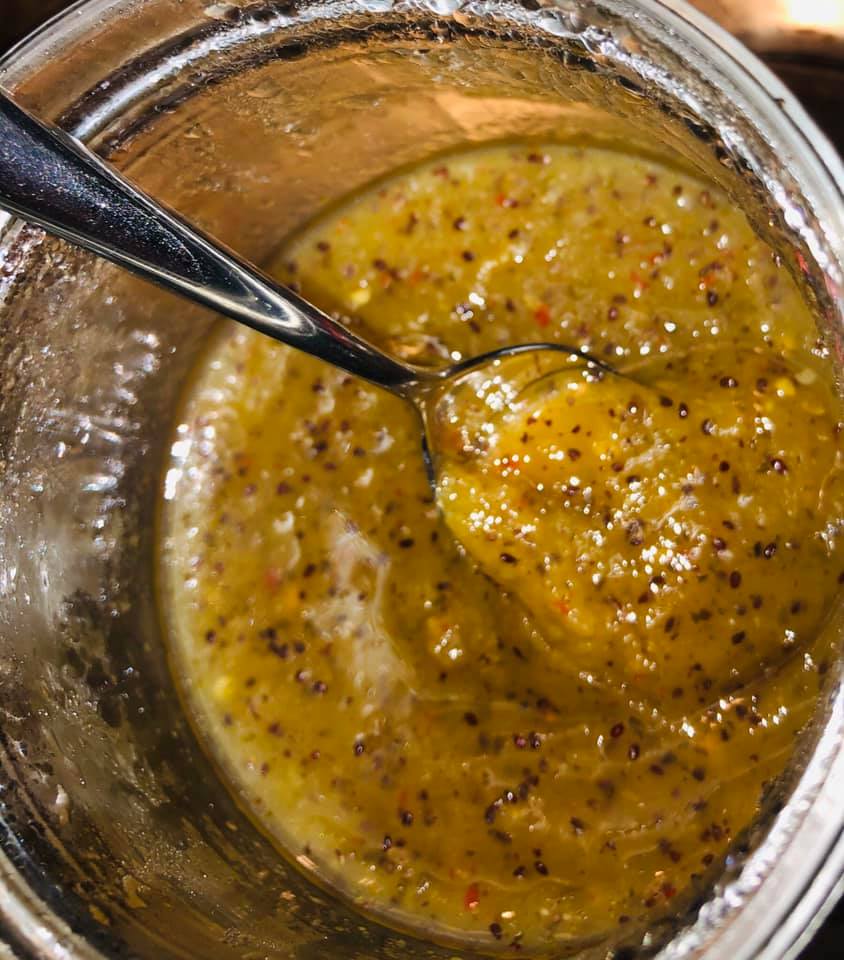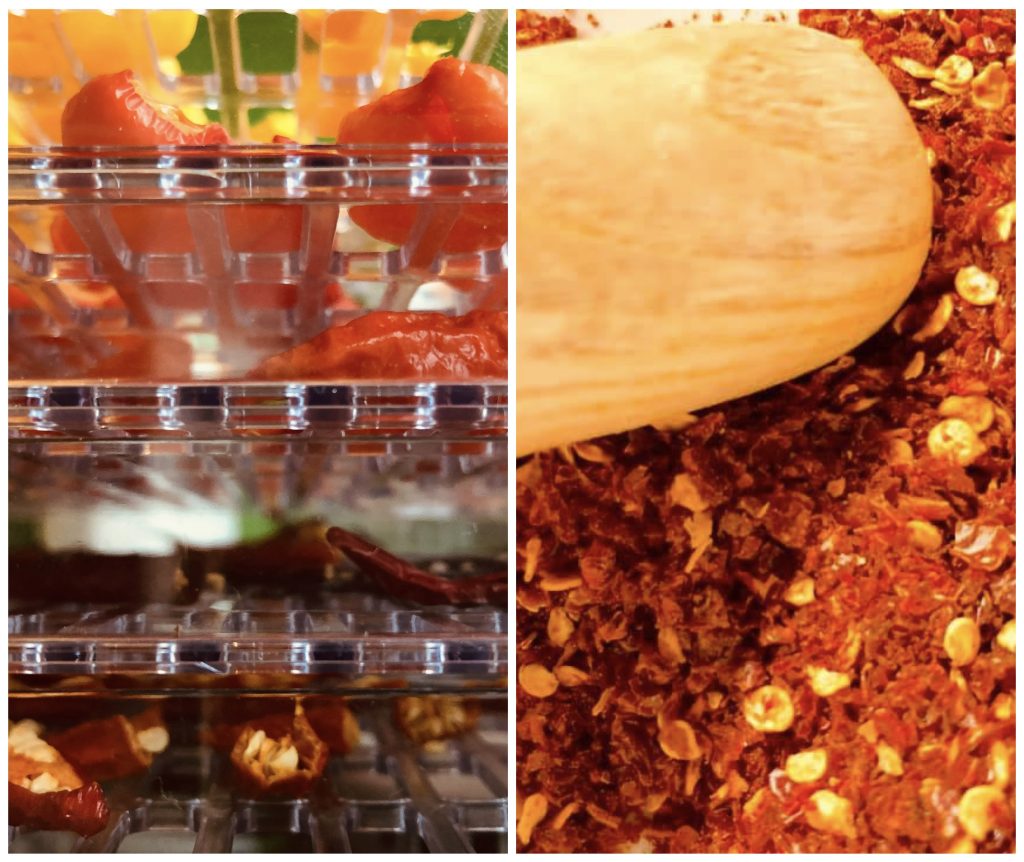Since I’m a bit of a messy person, I won’t be showing my actual kitchen on this page, as I’m too lazy to clean up. Instead I just want to share some basics about the art of chili pepper cooking which can help people get started.
While many people would argue that it’s easy to cook spicy dishes, as you can just add chili peppers to taste, right? To some extent that’s of course true, it is relatively straightforward to cook dishes that are just a little spicy up to those that are insanely spicy. For me however, the art lies in finding that right balance where dishes can be extremely spicy without the chili peppers over-powering all other flavours in the dish. While this is not super complicated to do, it takes trial and error, and probably you’ll get burnt in between once or twice. Therefore I want to share some of the basics that I use nearly every day and that allow you to make hot dishes that are full of flavour.
The key to having spicy dishes where the peppers do not camouflage all other flavours is to go for slow-burners. You know these dishes that feel fairly mild at first, while after a few bites you feel the first droplets of sweat forming on your forehead. But what’s the clue to getting that sensation with slow build-up of the spice level in your dish?
First of all it is important to realise that raw peppers are at their spiciest and that the spicy edge is typically already taken off during the cooking process. Typically the longer you leave your spicy dish to boil in, the more it converts into a slow-burner. It is even possible that the spiciness drops when boiling food in longer (without using a lid), as the capsaicin can also be carried out of the pot when it gets airborne in evaporated droplets. While some people don’t believe this to be true, I dare you to inhale above a simmering pot of a spicy dish and judge for yourself.
Next to that, there are some other ingredients that can somehow absorb the heat of chili peppers and take the edge off. First of all, acidic and sour ingredients can really work wonders. This is why lime and lemon are often used in combination with chili peppers, but many other fruits would have a similar effect. Personally, I use lemons and limes regularly in my curries, hot sauces and jams. Secondly, any dairy products also work miracles in absorbing the spiciness of chili peppers. This is due to the presence of casein in dairy products, which can break the bond between the capsaicin molecules and the receptors in our mouth, allowing to wash it away and get rid of the burning sensation. Therefore milk, yoghurt and ice cream are your best friend when in desperate need of extinguishing chili pepper fire. For the same reason (coconut) milk or cream and yoghurt are popular ingredients in many kinds of curries.
But in which dishes do chili peppers work out well? If you ask me, pretty much any dish can be improved by spicing it up. If you’re wondering about different options, make sure to browse the recipe section for inspiration. I’ll give you a few examples here, just to give an impression of things I like to eat…
For breakfast, omelettes go really nice with hot sauces, or obviously you could have fresh peppers inside. Like it a bit sweeter, try pancakes with spicy jam once! Want to go even extremer? Why not have your pancakes with spicy jam of onion, bacon and coffee.
I won’t go into details on starters or mains, as I presume everyone can think of many spicy dishes that could work out nicely. Plenty of inspiration can be found elsewhere on this website.
But hey, let’s talk deserts! You think spicy doesn’t blend well with deserts? Think again, there’s endless opportunities. Chili peppers work great in jams, which can be nice as a side for things from the grill, but just as well to be paired with pastries or even ice cream. One of my personal favourites is mango and pineapple cheesecake with habanero. And dare I mention chocolate? As a Belgian I definitely should, and I can warmly recommend things like spicy chocolate fudge!
So now you have an idea of which dishes can work out, we should also think about drinks that can be paired with them. My personal favourite when it comes to spicy drinks is habanero limoncello. It’s really the perfect marriage of flavours as the lemon takes off the spiciest edge of the habanero, while the lemon touches in the habanero complete the match made in heaven. If you think I’m nuts, drop by to try some (it’s always in stock, for obvious reasons) or make some yourself, it’s easy, fun and really delicious! There’s quite a few more drink infusions I’ve tried and which can be found in the recipe section for some surprisingly nice spicy cocktails.
Have you noticed how I’ve been taling quite a bit about flavours blending? I guess this is no real surprise, as the blender is the spicy chef’s best friend!

Given that many chili peppers are harvested simultaneously, there’s often a need to process many of them in a short timeframe to be able to preserve them. Two popular ways of doing so is by making hot sauces and spicy jams, both of which are done in a blender. In order to end up with mixtures that can be preserved for extended periods some ingredients are blended in for preservation. Acidic and sugary fruits work out great for both, but often these are not sufficient in themselves. In case of jams extra sugar definitely helps in prolonging the conservation period, although it should be noted that most of them can also be frozen in smaller portions when you want to limit the amount of added sugars. In sauces, the conservation is often realised by adding vinegar to the mixture, allowing to keep sauces in the refrigerator for many months.
Since we arrived at the point of preserving chili peppers, there’s two very common and easy ways that I also use every year when harvesting. First of all there’s drying of chili peppers, which can be done in an oven or using a food dryer. Since the process typically takes several hours up to half a day I’m a fan of using a food dryer, as it allows you to dry at low temperature and with sufficient air circulation while using much lower power than your bulky oven. After drying, it is super straightforward to crush the peppers into powder, or preserve them as a whole.

Another easy way of preserving chili peppers is by using them to infuse oils and spice them up. It’s always nice to add homemade spicy oil on your pizza, or to cook any dish with your own spicy oils.
